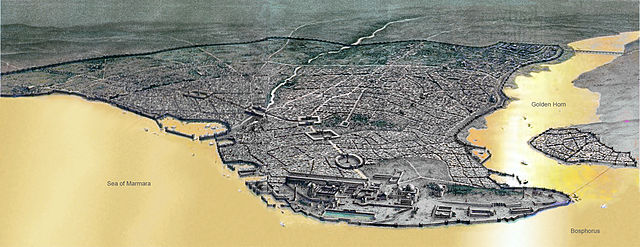The Dual Nature of the Byzantine Empire
By Edward T. May. When considering vast events such as the fall of the western Roman empire, the linkage of specific events with exact dates is a dicey proposition at best. One cannot say, for example, that the empire began its demise in a certain year, or that its absolute collapse occurred on such-and-such a day. With this caveat in mind, we may tentatively suggest the genesis of the Byzantine empire as having occurred when Zeno, emperor of the eastern portion of the Roman empire, assumed sovereignty over the remains of that empire in the late 5th century A.D.
Thus, the section of the Roman empire that managed to survive the “barbarian” invasions, and which, as it happened, was centered in Constantinople, became the Byzantine empire, a realm that survived until Constantinople fell to the Ottoman Turks in A.D. 1453.

Geography dictated the Byzantine (Roman) empire would possess something of a dual nature. Straddling the border between Asia and Europe, the empire experienced a tug of war between the Latin world and the Greek, between the Occident and the Orient, between Christian and non-Christian. The population was composed of “a motley assemblage of peoples.” Egyptians, Armenians, Jews, Slavs and Greeks were but some of the ethnic groups in this “chaos of peoples.” Yet the Byzantine empire maintained a cohesion and continuity over the course of its existence that is nothing short of remarkable. That the empire was able to maintain a political unity of sorts for 1,000 years is a testament to the administrative ability of the competent emperors such as Justinian (born 482/3, ruled 527-565) and Heraclius, and the relative efficiency of an extensive bureaucracy that compensated for the weak emperors. [Read the entire article as PDF…]
Taken from The Barnes Review, May/June 2001: The Dual Nature of the Byzantine Empire VOLUME VII, NUMBER 3
Share this post
Ancient Tulum: Mayan Capital of High Technology and Ancient White Leadership
re-Spanish Mexico’s ...





